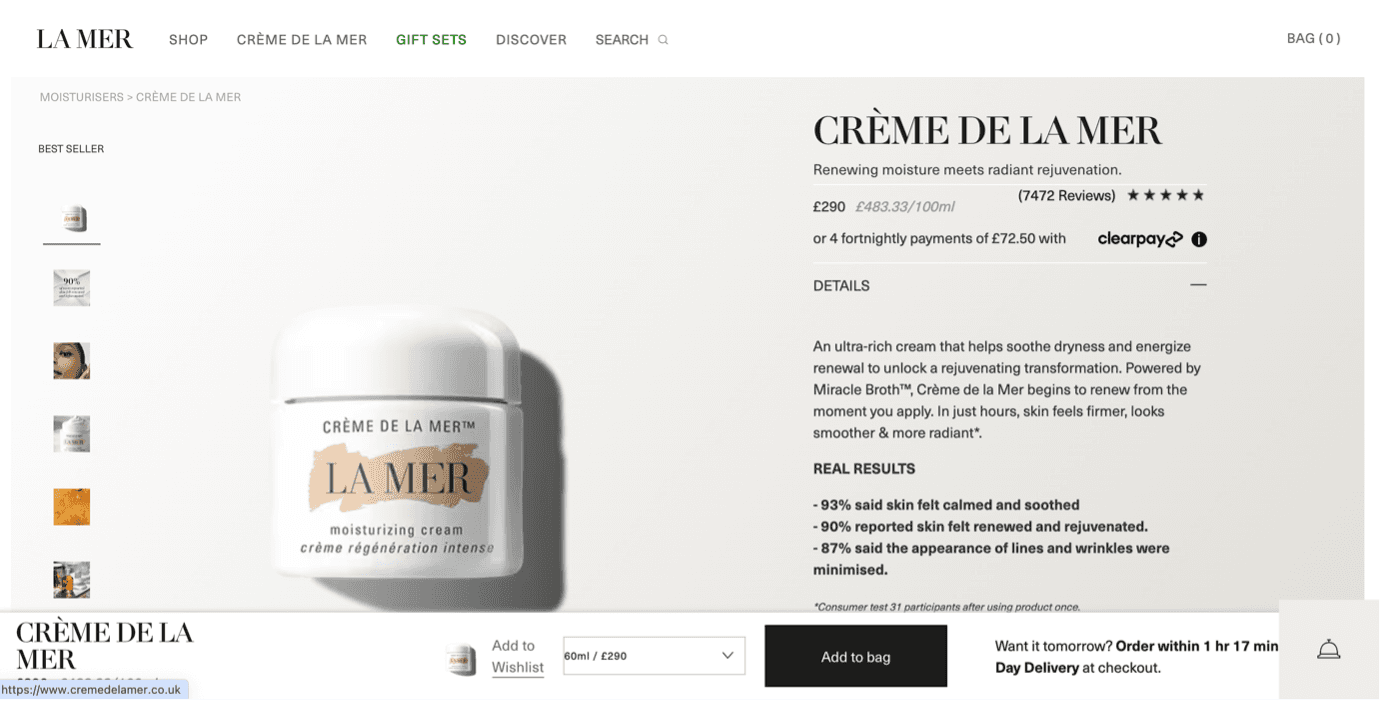
Product Description page vs Independent Landing Page
Ecommerce Strategy, Revenue Growth, UX
Struggling to acquire new customers at scale? Learn more about how we've helped brands just like yours. Click here.
When to use a landing page?
There are 2 places where we would always recommend using landing pages instead of directing users to your homepage or product pages.
Your ad CTA reads “Learn More”.
If you have any ad campaigns where the CTA reads “learn more” you should be directing users to a bespoke landing page which actually tells the user more about whatever is being showcased in your ad.
Example campaigns where “learn more” is used could be specific seasonal product drops, bundle offers or promotions you are running.
Upper funnel activity.
When you are running brand awareness campaigns that are focused more on your brand’s story than a specific product, you should be using a landing page as the final destination. Yes, you could just use your homepage but sometimes homepages are very simple offering a more visual experience for the user.
A landing page, in this instance, would offer more page space for you to delve into your brand story or creative theme in more detail, highlight key products and showcase social proofing and reviews in a central place. It would provide a smoother user journey than directing to a PDP but a more personalized experience that just hitting the homepage.
When to use a product description page?
PDPs can be used in your marketing campaigns. Not every final URL needs to be a bespoke landing page. Bottom of funnel, sales activated ads like Google shopping ads, and catalogue style ads across social are the ideal campaign types for using PDPs as your landing pages.
These campaign types showcase specific products, often with a “Buy Now” CTA. You want these users to be able to buy the product in as little clicks as possible so directing them straight onto a PDP where they can check out product specifics, add to cart and check out without navigating to another page is really important.
Long story short.
Top and middle of funnel ads = Landing page
Bottom of funnel ads = Product description pages.
Now just make sure that you are building and optimizing these pages in line with page specific best practices.






